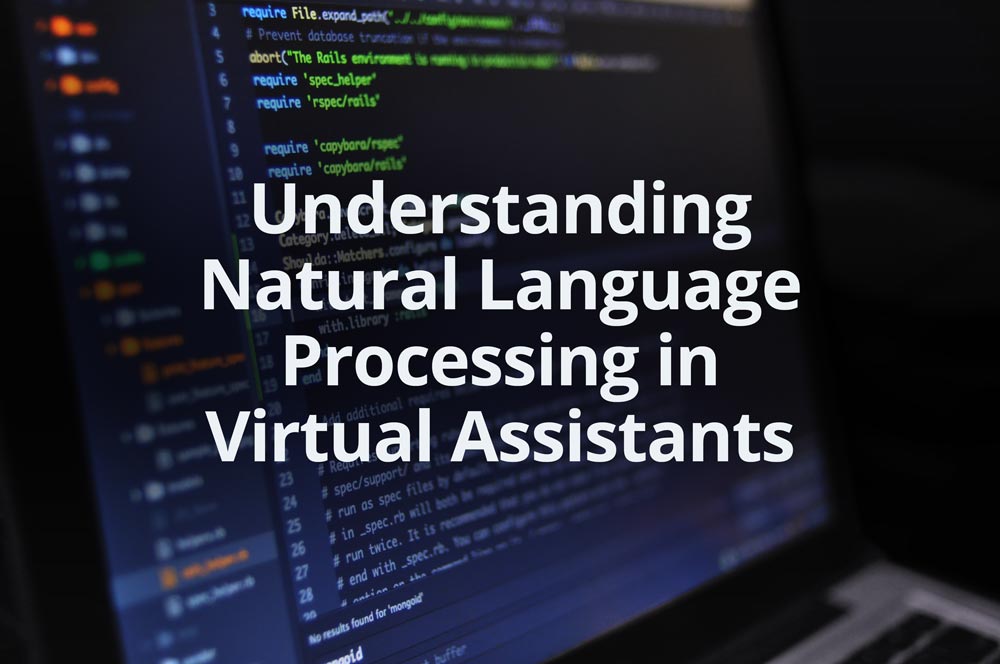Understanding Natural Language Processing in Virtual Assistants
In a market saturated with offerings from various companies, it is crucial to possess an understanding of the underlying technologies that make AI Virtual Assistants effective vs. ineffective. Of paramount importance is the Assistant’s ability to interface with users and complete the appropriate action based on the information provided by the user.
While it may seem like common sense, that description merely scratches the surface of the capabilities that separate a chatbot from a Virtual Assistant.

Critical differences between rudimentary artificial intelligence and its corollary abilities to complete user-requested actions lie in the framework of Natural Language Processing (NLP), Understanding (NLU), and Generation (NLG). Natural Language Processing in Virtual Assistants is key to understanding both the broad picture and the minute details.
When combined in Aisera’s Virtual Assistant, the three technologies far exceed the precedent set by competitors for conversational AI and conversational automation solutions. In this blog, we will examine the specificities of NLP, and later NLU and NLG, as they appear across Aisera’s Generative AI platform and how these differ from other Virtual Assistant offerings on the market.
Ecosystem
When interacting with a user, a proper Virtual Assistant must be equipped to capture any incoming request regardless of the domain and intent of the request and return an immediate and relevant response. In this way, the Virtual Assistant is like the goalkeeper of a World Cup-winning soccer team: they catch the incoming ball from any angle and return it up the field to one of their teammates.
Unsurprisingly, Virtual Assistants can become critical players on any customer service team as the Assistant keeps track of customers throughout their buying journey, executes automated processes on backend systems, deflects routine issues from service agents, and escalates unresolved requests to the most effective agent when the time is right.
But this is only one flavor for the application of a conversational AI platform as a virtual assistant, there are numerous use cases across Sales and Marketing, Human Resources, IT, Legal and Finance, and more.
Knowing that a capable virtual assistant must be equipped to handle so many different facets of the customer’s journey while understanding the nuances of a given customer’s mood and sentiment, and therein lies the most powerful applications of cutting-edge Natural Language Processing in Virtual Assistants and NLU technologies.
We go deeper into the gamut of capabilities Aisera’s Virtual Assistant has and how it helps with Customer Intelligence along the customer’s journey in this blog.
Understanding Intents
For the uninitiated, semantic NLP, NLU, and NLG are technologies built to solve one problem: identifying the user’s intent during any given interaction. In humans, there are many mechanisms that are employed to aid in deciphering the intent behind another human’s word choice, whether they are visual cues, the difference in inflection across a word, or a familiarity with the vernacular dialect of the conversation.
Machines, however, do have most of these luxuries and therefore must rely on different mechanisms to ensure the correct interpretation of user interaction. The components that makeup NLP are a message interpreter and an exception handler. These two pieces allow AIsera to process a user request and then execute tasks and actions based on the extracted information.
The message interpreter uses techniques such as tokenization, spell checking, and lemmatization to break down the nature of the user’s request prior to classifying the request and passing it along to the NLU module to further analyze the intent behind the request. For example, an utterance of “I would like to access Zoom” could be understood as:
Intent: [name: “Provision $Application”], entities: [name: “$Application: Zoom Videoconferencing”]
From there, the aforementioned interpretation techniques can be added to further breakdown the utterance, which could look like:
Intent: [domain: “IT”], intent: [type: “action”], entities: [class-name: “videoconferencing”], sentiment: [score: “positive”]
If the request is not able to be dissected and classified, the NLP module engages the exception handler to inform the user that it cannot process their request and offer an instant escalation if the user would like to continue to pursue the request. More often than not, the NLP module is able to skip the failsafe of invoking the exception handler since the message interpreter does a fantastic job of cleaning and parsing the incoming data.
The final part of the classification process involves relating the interpreted message to the existing domain ontology and taxonomies. Aisera’s NLP module takes the processed user utterance and classifies it under a certain domain by mapping the extracted entities from the request to a list of popular entities within the target domain. This is known as ontology, a vast group of associated entities and their logical dependencies.
Aisera’s Virtual Assistant is pre-trained on a broad and deep body of data, which includes a global ontology of over 1.1 Trillion phrases and 5 Billion intents. The NLP module does more than process text, and classify the domain and intent of the utterance.
The Message Interpreter also classifies the intent type, analyzing the user or customer sentiment to add additional information (in the form of supplemental tags) to help keep the data organized and augment Aisera’s Virtual Assistant in determining the optimal next best steps to take action on.
What it Means for Users
Natural Language Processing in Virtual Assistants is only one piece of the puzzle, and the example provided merely scratches the surface of the exact inner workings of Aisera’s Virtual Assistant, but it does offer a more technical glimpse into how inbound data is handled by the NLP module. With NLP, businesses gain the ability to instantly engage users without resorting to the narrow scope of an archaic scripted dialog flow.
NLP enables Aisera to be like the World Cup goalkeeper – catching incoming requests, no matter the speed, spin, or angle of attack. In our next blog, we will take a look under the hood of how Aisera built its world-class Natural Language Understanding module and its benefits to businesses and end-users alike.
